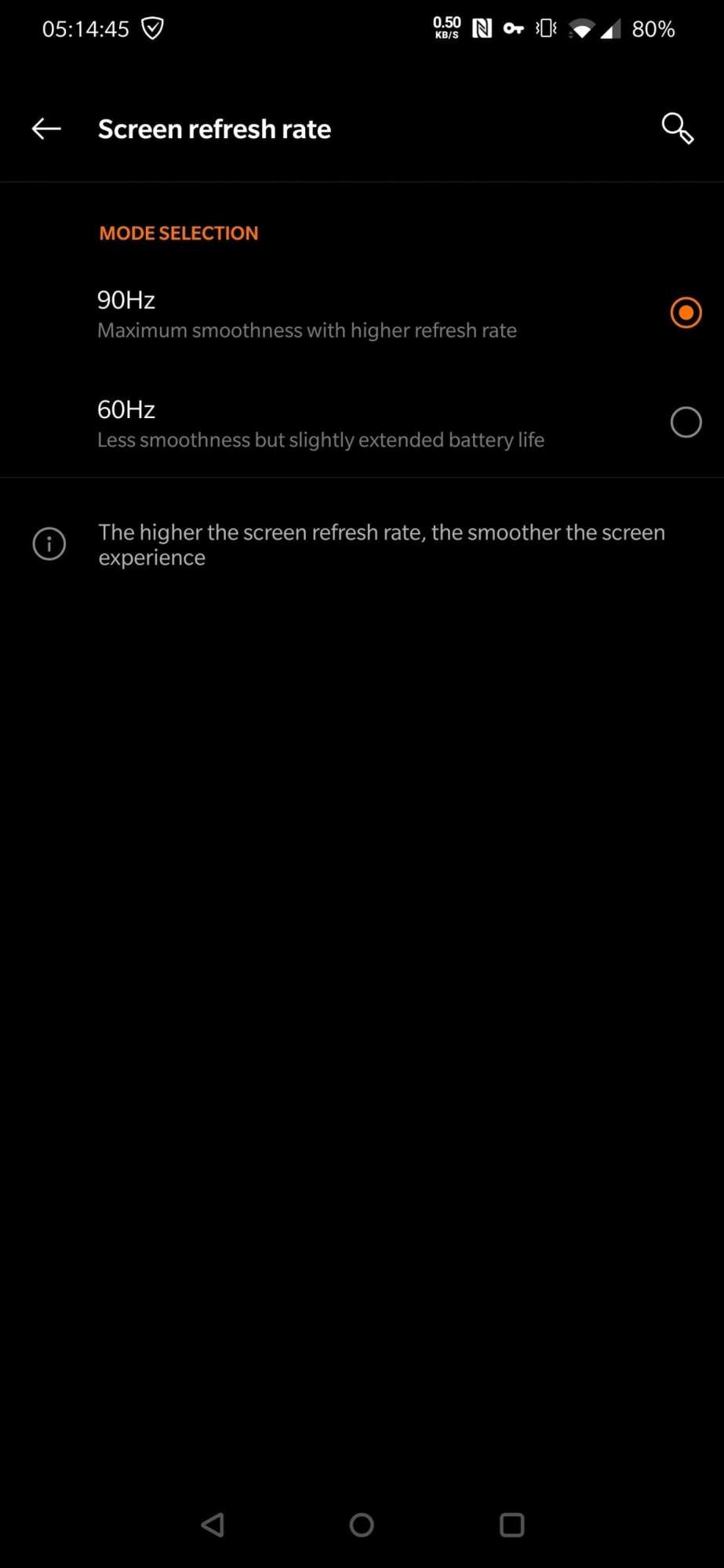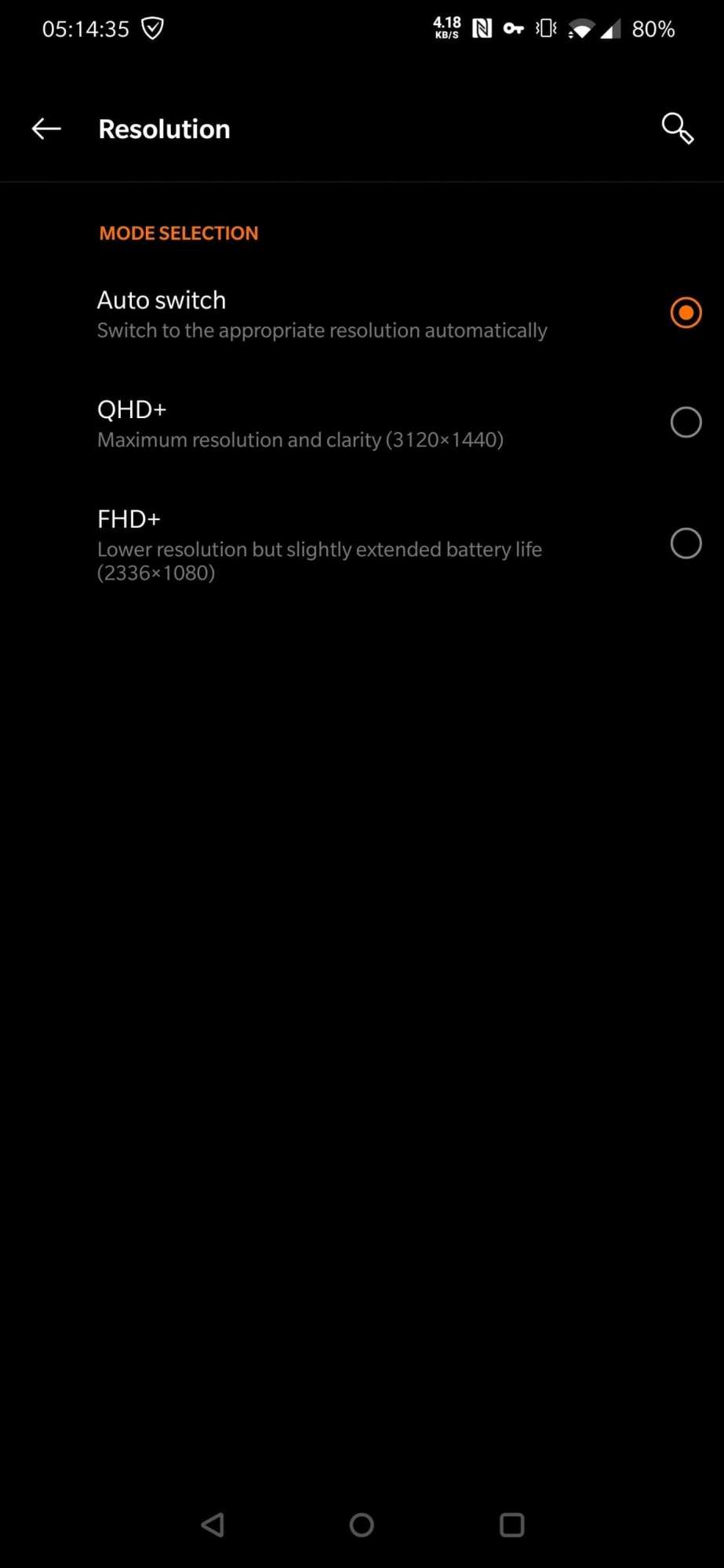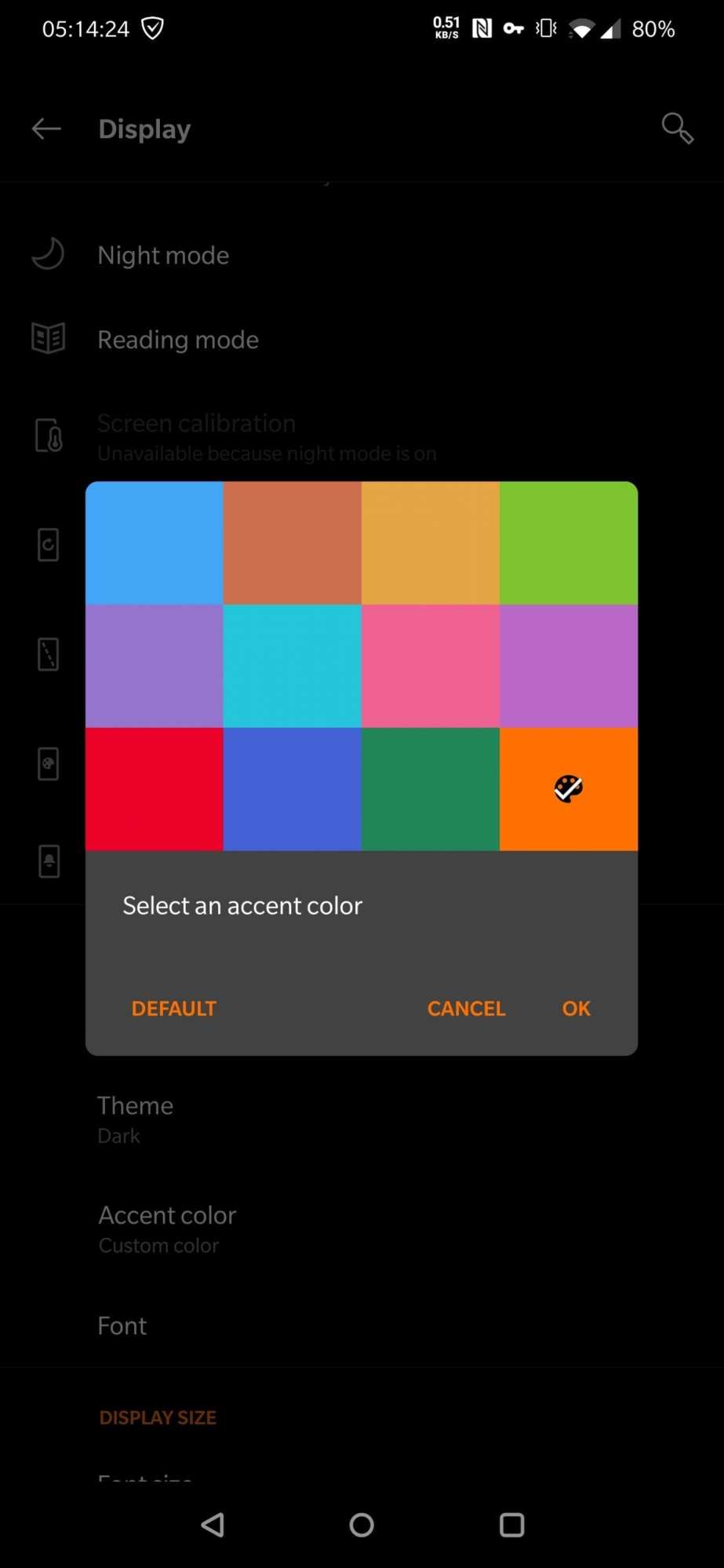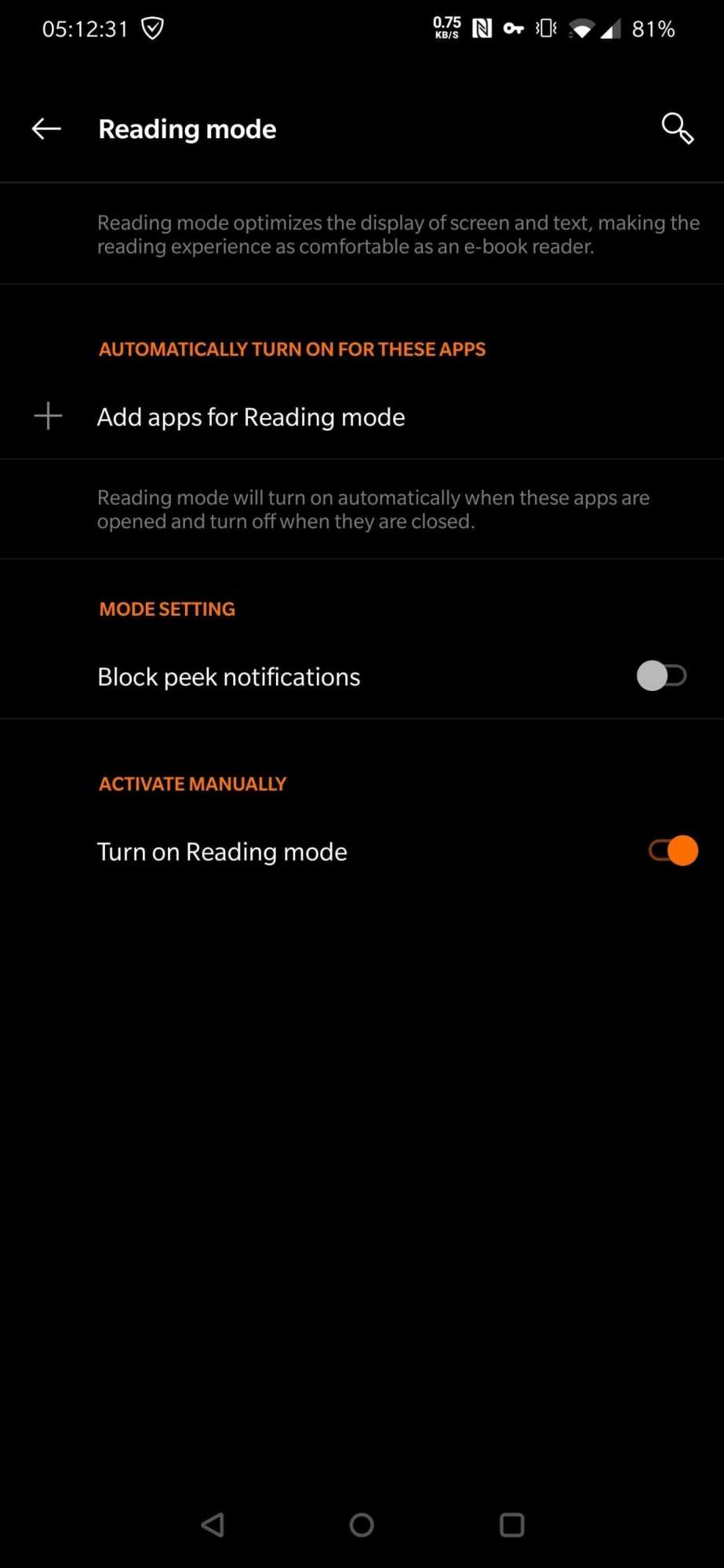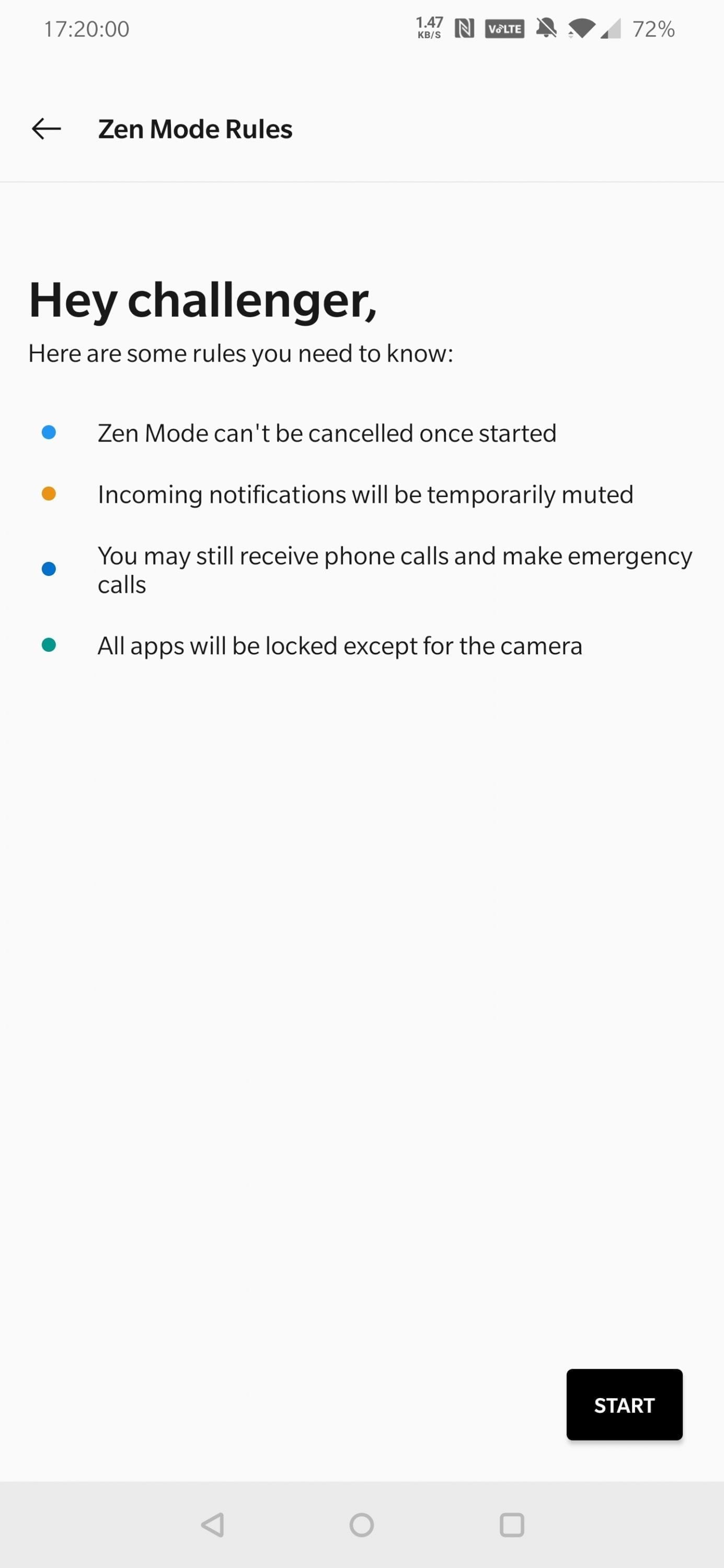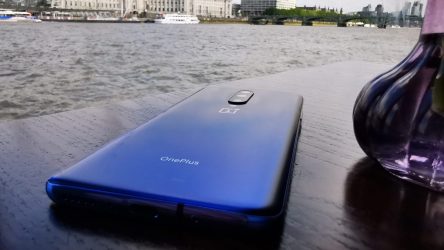
OnePlus 7 Pro & 7 Pro 5G Review: Two very near perfect packages (includes camera photo gallery)
OnePlus 7 Pro
£649Pros
- Stunning display with 90Hz refresh rate and HDR10+
- Very respectable battery life
- Good level of support (updates)
- Excellent data speeds (5G and 4G)
Cons
- Camera isn't as well developed in low-light scenarios as it could be
- Power management options could be more advanced
- No water resistance rating or wireless charging
OnePlus came about with bold claims of building ‘flagship killer’ handsets at far more affordable prices. With the OnePlus 7 Pro, including its first 5G model, the company is gunning for top spot.

I’ve been fortunate enough to get both the standard and 5G models, and you can read more about the phones in my OnePlus 7 Pro preview.
There’s little point repeating everything, except perhaps to reiterate that the (non-Pro) OnePlus 7 is the spiritual successor to the OnePlus 6T. For that, OnePlus has retained the same pricing as before.
With the launch of the Pro model, it has allowed OnePlus to step up a notch (and corresponding price) to better compete with the likes of Samsung, Huawei and Apple.
Actually, the word notch isn’t perhaps a good choice given the OnePlus 7 Pro has no notch, favouring a motorised pop-up selfie camera instead.
The phone is a massively powerful handset (running Qualcomm’s top-spec Snapdragon 855 chipset) with plenty of RAM and storage options. In its 5G guise, it becomes faster still when it comes to accessing data on the move.
On the back is a triple camera setup that enables OnePlus to take a leap in camera performance, although it hasn’t necessarily got everything right just yet. It’s worth noting that as I composed the review, OnePlus has rolled out a series of firmware updates to improve the camera performance.
With the base model starting at just £649, there’s quite a saving over the handsets it is going head-to-head with, like the Samsung Galaxy S10+, the latest Galaxy Pixel phones, or Huawei’s P30 Pro (and perhaps even the Mate 20 Pro).

Design
The OnePlus 7 Pro is a pretty gorgeous combination of metal and glass, with a high-definition curved glass display and choice of rear finishes, some more prone to fingerprints than others.
Both of my review handsets came in the Nebula Blue finish, which is the least prone to marking, and also has a nice shimmer effect. You can also get it in a shiny black or almond finish (the latter also hiding fingermarks on account of its lighter colour).
The phone comes with a clear plastic casing in the box to protect the phone, which is very welcome and advisable to be put on straight away. OnePlus and others make other accessories, but it’s always good to have something to get you going and avoid scratches within a matter of hours.
At the top edge of the phone is a microphone and the pop-up selfie camera, which enables the front to be almost all screen.

On the left side are two volume keys, while on the right is the OnePlus switch (silent, vibrate and sound on) and a power button.
At the base is a SIM-tray, another microphone, USB-C connector and a single speaker.
This base speaker is accompanied by a second speaker above the display to give stereo sound.
The 5G model only has single SIM support, while the standard OnePlus 7 Pro has a tray for two, with dual 4G access. Both models support Voice over Wi-Fi (VoWiFi) and 4G Calling (VoLTE).
Screen
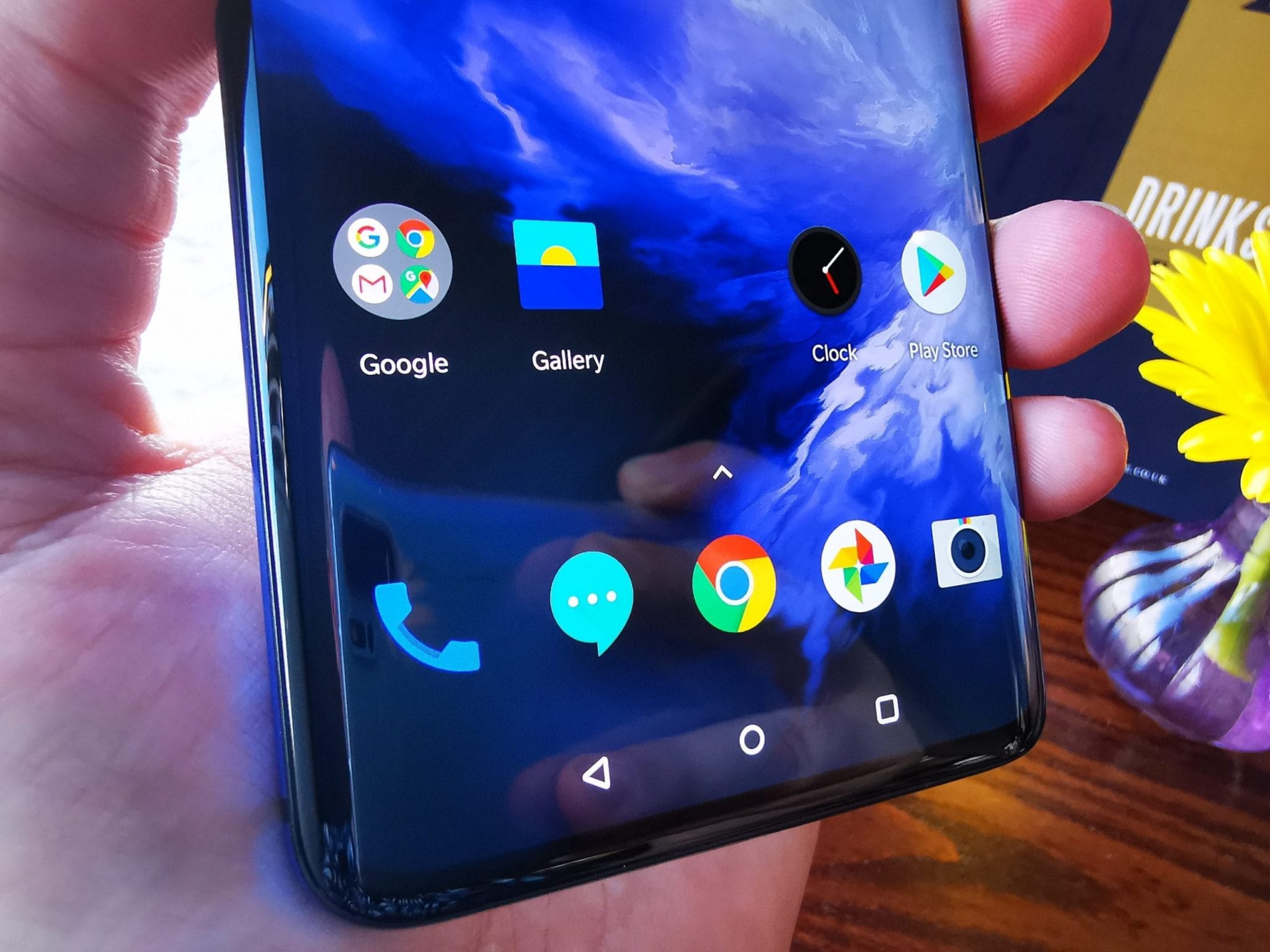
If you put a OnePlus 7 Pro in the hands of anyone, and invite them to play around with the phone, you can be assured they’ll be amazed by the display. Throw on a high-definition YouTube video or fire up Netflix, ramp up the volume, and OnePlus will likely bag a sale there and then.
The 6.67-inch screen is incredible. OnePlus should be rightly proud of its A+ DisplayMate rating for colour accuracy. It’s bright, along with a high level of control to adjust the saturation in the settings menu.
Being an OLED display, you can also set a dark theme on the phone and even set your own accent colour. I opted to keep the dark theme enabled at all times.
With a 90Hz refresh rate, 1440×3120 pixel resolution, and HDR10+ support, everything looks incredibly slick. As you scroll through menus and do just about anything, you’ll find almost all other phone displays look decidedly disappointing in comparison.
The various screen options
Compared side-by-side with my Huawei P30 Pro, the OnePlus 7 screen wins by a mile. It also holds its own against rival phones like the Galaxy S10+. And both of these phones have excellent screens.
The phone has palm rejection to avoid accidental presses, which is vital given the tiny bezels of under 2mm top, left and right, and 3.2mm at the base.
I have heard reports of the screen registering false presses, but never experienced this on either device during my testing.
Although not really screen related, it’s worth noting that the stereo speakers do a great job of ensuring the audio is on a par with the display for when you want to watch a video or listen to music without headphones.
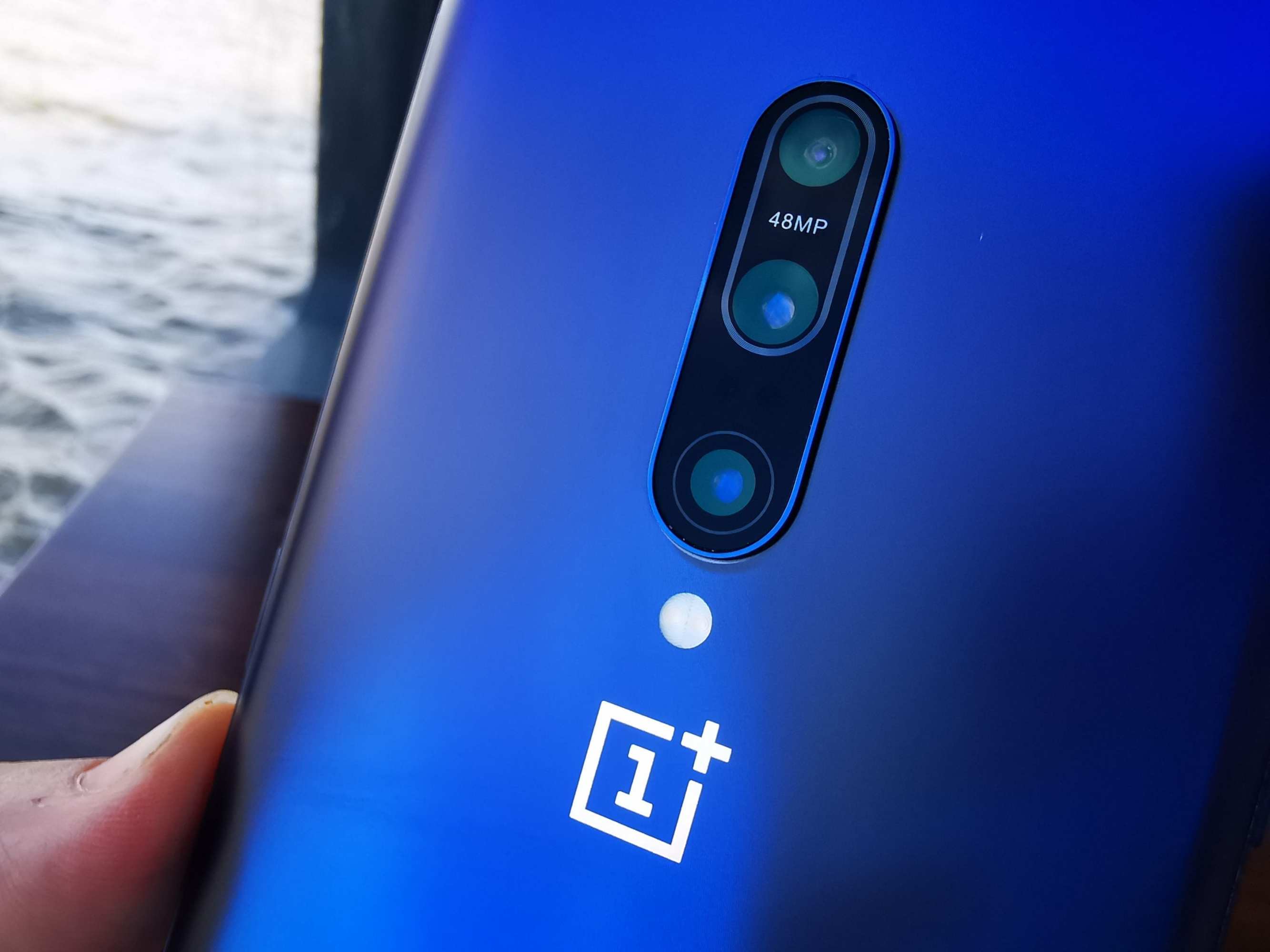
Camera
As someone not massively bothered by taking selfies, the ability to keep the 16-megapixel f/2.0 selfie camera hidden away and avoid cutouts or notches is a definite plus.
For those that do want to take selfies, the quick motorised action makes it no slower to take a photo than if it was permanently on show.
While there are obvious concerns about moving parts in a phone (OnePlus say it’s good for at least 300,000 activations), I don’t think there’s much to worry about. If the camera is up and you drop the phone, it recedes back into the phone to protect itself.
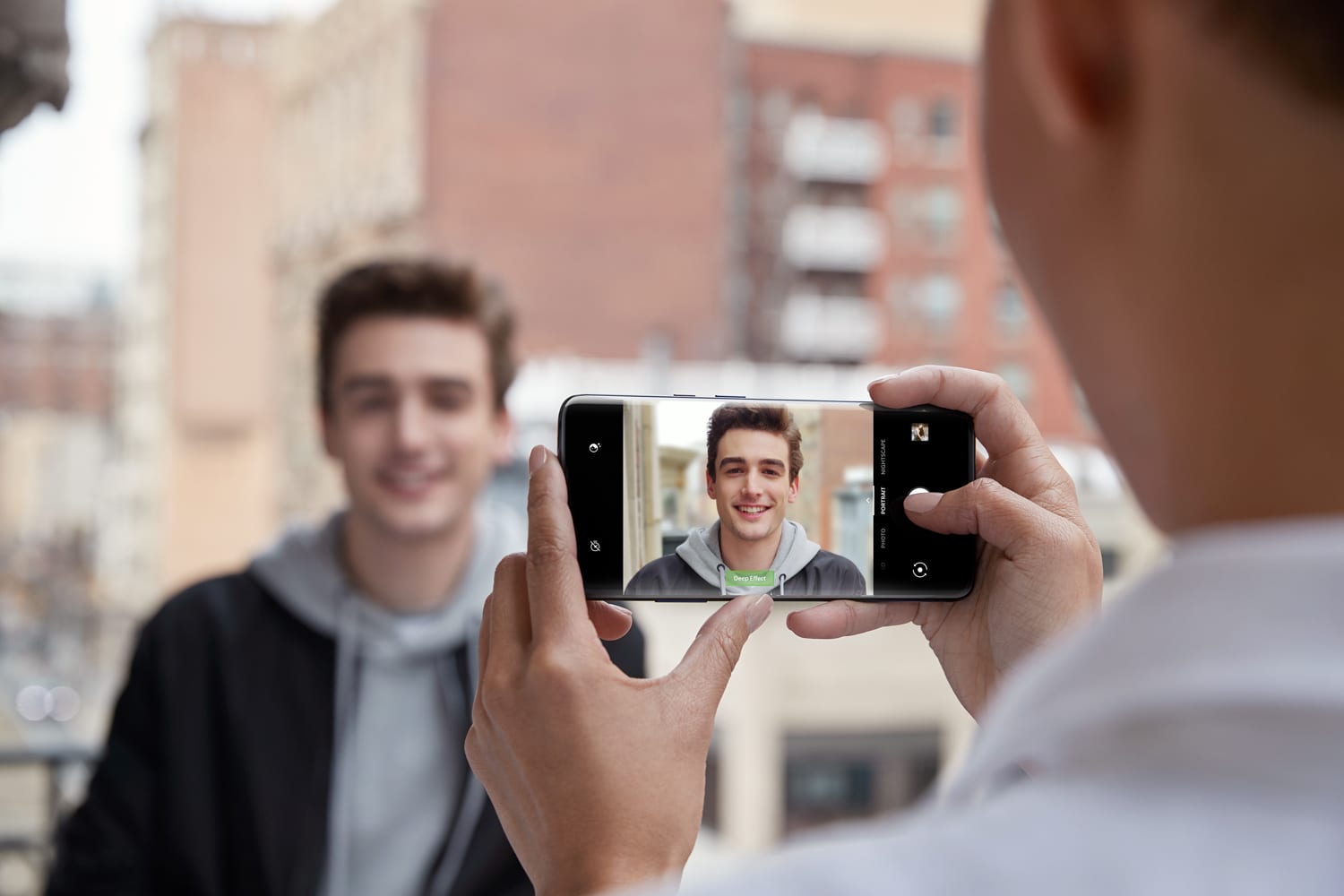
Back to the rear of the phone, and the OnePlus 7 Pro and 5G model each come with a triple camera configuration that combines a 48-megapixel (f/1.6) camera with a 16-megapixel ultra-wide camera (f/2.2) and 8-megapixel 3x telephoto camera (f/2.4).
The primary 48-megapixel camera comes with OIS and EIS, while the telephoto camera has OIS.
Having already appeared on other handsets, including the Honor View 20, the Sony IMX 586 sensor has proved itself as very respectable. By default, a 48-megapixel image is saved as a 12-megapixel photo using pixel binning. This reduces noise and improves the performance in low-light.
However, Huawei has really moved the goalposts since the launch of the P30 Pro and if it’s low-light image quality you’re looking for then you may be a little disappointed with the OnePlus 7 Pro, even with its latest generation Nightscape mode.
It isn’t that the photos are terrible, and you almost certainly wouldn’t be disappointed with any of the photos you take at night, but when you know what’s possible elsewhere, it will always stick in the back of your mind.
With each successive update (which shows OnePlus isn’t sitting back and not caring), things seem to get better, from better colour accuracy to enhanced contrast. So, it’s possible that the experience will improve as time goes on – but don’t expect the phone to ever get to the same standard as offered elsewhere.
Despite this, when it comes to photos in the daytime, the camera performance is excellent as you can see from the photos below. These are taken from my open Google Photos gallery, which anyone can contribute to (and many people have).
And there’s nothing to moan about when it comes to video recording either. 4K video is limited in length in 60FPS mode (to 5 minutes) but otherwise, you are free to capture video for as long as you want. On the out-of-the-box firmware, I did experience dropped frames but that was later fixed.
Other camera modes, like the panoramic function, add extra functionality but for the most part, the camera interface is kept very simple. I did notice that a panoramic photo taken at night came out looking like a total mess, but I suspect very few people take panoramic photos any more than other gimmicky features like slow motion video.
So, what can you take from this? Well, the camera is being continually improved via software updates. Photos and video in the day are great, while low-light photos are acceptable. All things considered, the OnePlus 7 Pro camera experience is more than adequate and not a big enough issue to outweigh the overall experience of the phone.
Camera Samples
Video Sample
Performance & Features
With Qualcomm’s flagship chipset, the OnePlus 7 Pro was never going to be slow. With fast UFS 3.0 storage, loading apps is incredibly snappy. Add in that high screen refresh rate (which can be dropped to 60Hz to save battery if you must) the entire phone gave me perhaps the best performance on any device I’ve tested of late.
The 5G model comes with the addition of Qualcomm’s X50 5G modem, and no other specification differences. That means you still get the same battery, while the phone dimensions remain the same.
There are significant differences inside, with a different layout of the circuitry to accommodate the extra modem and antenna design.
Even in its 4G guise, the OnePlus 7 Pro isn’t slow with a 4G modem that supports speeds in excess of 1Gbps. With 5G, it can offer even more using a combination of 4G and 5G at the same time. I did a separate test of the 5G model recently and was very impressed (with some minor issues), but even on 4G it is possible to get as high as 340Mbps in some locations.
Speed test results on 5G

St Paul’s 
BT Tower 
Canary Wharf 
Emirates AirLine
The decently sized 4,000mAh battery comes with OnePlus’s Warp Charge technology, with 30W charging good to get the phone from 0-50% in just 20 minutes. You get the fast charger in the box too, so there’s nothing else to shell out for if you want to enjoy the fastest charging times.
OnePlus is yet to adopt wireless charging, claiming to want to wait for improvements to charging speeds, so this may well feature in a later model.
Likewise, water resistance is not a thing here either, although it appears the phone has been given a level of protection that should suffice for basic splashes, or using the phone during a light rain shower.
With a top-spec chipset, OnePlus has thought a lot about gamers. A choice of gaming modes can switch off background tasks, mute notifications and focus all power on the CPU and GPU.
The Fnatic mode (see above) is set specifically for hardcore gamers, and thankfully Qualcomm has now managed to ensure its chips don’t get red hot under load as many may recall back in the days of the Snapdragon 800 and 810 chips.
There’s an advanced cooling system too, so the phone won’t get as hot as phones did a few years ago, complete with all the thermal throttling issues that come with the heat.
The Zen mode I talked about in my preview, is another feature that has to be mentioned as a way of encouraging users to take a break for 20 minutes and do something else. Like talk to someone.
Once activated, you’re limited to taking photos or receiving (but not making) calls. You can still make emergency calls, but it’s definitely not acceptable to tell the operator you’re phoning because you can’t access Facebook!
It’s only 20 minutes and it’s a feature that will hopefully be copied by others. Oh, and if you have more than one phone then it’s cheating to swap to that when you get itchy fingers after 30 seconds.
Final thoughts
The low-light camera performance appears to be a work in progress, but the rest of the camera is more than capable of delivering great photos at other times. Video is good too, so some of the comments online that ridicule the camera and make it sound as if the OnePlus 7 Pro has the worst camera out there is little more than hyperbole.
Phones like the P30 Pro can spoil you somewhat, and if you want the best possible camera experience in all conditions then the OnePlus 7 Pro isn’t quite going to cut it, but if you look at the camera samples above you’ll more than likely conclude it isn’t as bad as some make out.
The screen also makes the phone a joy to use, and the battery will get through an average day with 4 or maybe 5 hours of screen time. I did have to enable the battery saver at times to enable this, and this is an area where OnePlus could improve things with more options to save power instead of just using the native Google/Android power management.
I adapted quite easily to the lack of wireless charging, which for me is something for overnight charging anyway. The ability to rapidly charge is more important in most cases.
Not having a 3.5mm headphone connector didn’t upset me either. Getting a USB-C adapter isn’t a massive hardship, while many more people are probably now using wireless audio options too – or buying headphones with a USB-C connector in the first place.

An official water/dust resistant IP rating would have been nice, and hopefully this (and likely wireless charging) will appear in the next iteration of the phone. If there’s to be a OnePlus 7T Pro, perhaps one or both of these features will make an appearance.
What I got from my time with both the 4G and 5G models was the feeling that OnePlus has nailed it in almost every area, and actively rolling out updates inspires confidence.
It’s great to assume everything will be perfect from day one, but that’s not how things are these days. It’s to be expected that there will be tweaks and optimisations made over time.
As long as these keep coming, the OnePlus community should be happy. I think by and large they are, which is vital when so much of the success of OnePlus comes down to the community forum – and those who still queue up whenever a new model goes on sale.
I have no hesitation in recommending the OnePlus 7 Pro for anyone seeking a true flagship phone, and the only consideration is whether to pay the extra money for the 5G model (which only comes in Nebula Blue, so you won’t be able to get the black or almond colours).
As I stated in my separate 5G ‘review‘, I’d seriously consider future proofing myself if buying this phone on a 24 or 36 month contract. Even though there will be a newer 5G chipset this time next year (or sooner), the OnePlus 7 Pro 5G supports the main 5G band, so won’t be out of date anytime soon.
If opting to buy SIM-free and being the type of user that upgrades regularly, it may be acceptable to hang on and see what comes at the end of the year, but otherwise I feel the OnePlus 5G is the model to go for.
I think it’s great that OnePlus has stepped up a level with its Pro series and can’t wait to see what happens next.
Also consider…
Other handsets to consider include the Oppo Reno 10x Zoom and Oppo Reno 5G, the Huawei P30 Pro, Samsung Galaxy S10+ or Samsung Galaxy S10 5G.
Good Points
– Stunning display with 90Hz refresh rate and HDR10+
– Very respectable battery life
– Good level of support (updates)
– Excellent data speeds (5G and 4G)
Bad Points
– Camera isn’t as well developed in low-light scenarios as it could be
– Power management options could be more advanced
– No water resistance rating or wireless charging
“I have no hesitation in recommending the OnePlus 7 Pro for anyone seeking a true flagship phone, and the only consideration is whether to pay the extra money for the 5G model.”


